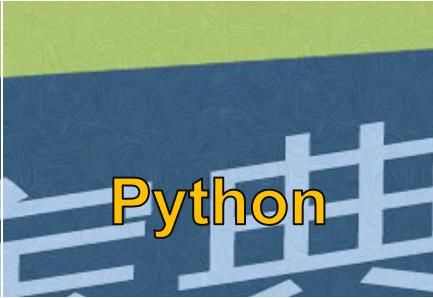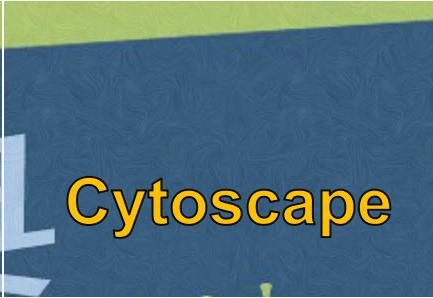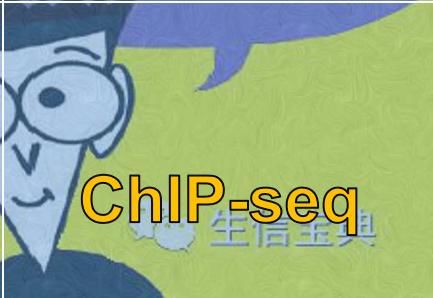你的adonis用对了吗?不同因素的顺序竟然对结果有很大影响
前情回顾
PERMANOVA原理解释:这个统计检验可用于判断PCA/PCoA等的分群效果是否显著!
配对检验:画一个带统计检验的PcOA分析结果 (再进一步,配对比较)
新问题来了?
假如我们关注不同的管理风格 (Management)和土壤厚度
(A1)对物种组成是否有显著影响?,应该怎么检验呢?
library(vegan)
# 数据的解释和准备见前面的推文
data(dune)
data(dune.env)A1在前,Moisture在后。这个情况下,A1和Moisture都与群体结构有显著关系。A1可以解释16.8%的总体差异,Moisture解释27.6%的总体差异。
adonis(dune ~ A1 + Moisture, data=dune.env, permutations=9999)
##
## Call:
## adonis(formula = dune ~ A1 + Moisture, data = dune.env, permutations = 9999)
##
## Permutation: free
## Number of permutations: 9999
##
## Terms added sequentially (first to last)
##
## Df SumsOfSqs MeanSqs F.Model R2 Pr(>F)
## A1 1 0.7230 0.72295 4.5393 0.16817 0.0003 ***
## Moisture 3 1.1871 0.39569 2.4845 0.27613 0.0061 **
## Residuals 15 2.3890 0.15927 0.55571
## Total 19 4.2990 1.00000
## ---
## Signif. codes: 0 '***' 0.001 '**' 0.01 '*' 0.05 '.' 0.1 ' ' 1Moisture在前,A1在后。这个情况下,只有Moisture与群体结构有显著关系。Moisture可以解释40.2%的总体差异,A1解释0.04%的总体差异。
For
adonisand sequential tests in general, the order of terms should be meaningful. If it is not meaningful, the tests are hardly meaningful.
adonis(dune ~ Moisture + A1, data=dune.env, permutations=9999)
##
## Call:
## adonis(formula = dune ~ Moisture + A1, data = dune.env, permutations = 9999)
##
## Permutation: free
## Number of permutations: 9999
##
## Terms added sequentially (first to last)
##
## Df SumsOfSqs MeanSqs F.Model R2 Pr(>F)
## Moisture 3 1.7282 0.57606 3.6169 0.40199 0.0002 ***
## A1 1 0.1819 0.18186 1.1419 0.04230 0.3181
## Residuals 15 2.3890 0.15927 0.55571
## Total 19 4.2990 1.00000
## ---
## Signif. codes: 0 '***' 0.001 '**' 0.01 '*' 0.05 '.' 0.1 ' ' 1输出结果中Terms added sequentially (first to last)这一句话很关键,表明环境因子的顺序对结果是有影响的,尤其是环境因子之间存在相关性时。
As there is some linear dependency, which ones goes into the model first determines how much variation is left to be explained by the second of the pair of covariates.
这时可以使用dbrda (基于距离的冗余分析),或者通过adonis2计算边缘概率
(by="margin")。
adonis2(dune ~ Moisture + A1, data=dune.env, permutations=9999, by="margin")
## Permutation test for adonis under reduced model
## Marginal effects of terms
## Permutation: free
## Number of permutations: 9999
##
## adonis2(formula = dune ~ Moisture + A1, data = dune.env, permutations = 9999, by = "margin")
## Df SumOfSqs R2 F Pr(>F)
## Moisture 3 1.1871 0.27613 2.4845 0.0052 **
## A1 1 0.1819 0.04230 1.1419 0.3228
## Residual 15 2.3890 0.55571
## Total 19 4.2990 1.00000
## ---
## Signif. codes: 0 '***' 0.001 '**' 0.01 '*' 0.05 '.' 0.1 ' ' 1
adonis2(dune ~ A1 + Moisture, data=dune.env, permutations=9999, by="margin")
## Permutation test for adonis under reduced model
## Marginal effects of terms
## Permutation: free
## Number of permutations: 9999
##
## adonis2(formula = dune ~ A1 + Moisture, data = dune.env, permutations = 9999, by = "margin")
## Df SumOfSqs R2 F Pr(>F)
## A1 1 0.1819 0.04230 1.1419 0.3257
## Moisture 3 1.1871 0.27613 2.4845 0.0066 **
## Residual 15 2.3890 0.55571
## Total 19 4.2990 1.00000
## ---
## Signif. codes: 0 '***' 0.001 '**' 0.01 '*' 0.05 '.' 0.1 ' ' 1
ord <- dbrda(dune ~ A1 + Moisture, data = dune.env, dist = 'bray')
anova(ord, by = 'margin')
## Permutation test for dbrda under reduced model
## Marginal effects of terms
## Permutation: free
## Number of permutations: 999
##
## Model: dbrda(formula = dune ~ A1 + Moisture, data = dune.env, distance = "bray")
## Df SumOfSqs F Pr(>F)
## A1 1 0.18186 1.1419 0.329
## Moisture 3 1.18708 2.4845 0.009 **
## Residual 15 2.38899
## ---
## Signif. codes: 0 '***' 0.001 '**' 0.01 '*' 0.05 '.' 0.1 ' ' 1在控制A1的情况下,Moisture对菌群的影响是显著的。反之,在控制Moisture的情况下,A1对菌群的影响是不显著的。
adonis和adonis2的区别
vegan包提供了两个函数adonis和adonis2来进行PERMANOVA分析,这两个函数有什么区别呢?
adonis函数对提供的变量执行的是序贯检验 (sequential test)。也就是说变量的顺序会对结果有影响(尤其是变量之间存在相关时)。系统会先评估第一个变量解释的差异比例,再评估后续变量解释的剩余总体差异的比例。后面会有一个例子展示差异。这等同于adonis2使用参数by="terms" (默认参数)。这通常被称为I型误差平方和 (Type I sums of squares),此时,对于模型
Y ~ A + B来讲,变量A的误差平方和为SS(A);变量
B的误差平方和是在给定A的基础上的平方和SS(B|A) = SS(A, B) - SS(A)。对于模型
Y ~ B + A来讲,变量B的误差平方和为SS(B);变量
A的误差平方和是在给定B的基础上的平方和SS(A|B) = SS(A, B) - SS(B)。如果你希望变量的顺序不影响结果,那么需要使用
adonis2,并且设置参数by="margin"。这时计算显著性时会考虑公式中其它所有变量,而不只是当前变量前面的那些变量。这通常被称为II型误差平方和 (Type II sums of squares),此时对于模型
Y ~ A + B来讲,变量A的误差平方和为SS(A|B) = SS(A, B) - SS(B);变量
B的误差平方和SS(B|A) = SS(A, B) - SS(A)。对于模型
Y ~ B + A来讲,变量A的误差平方和为SS(A|B) = SS(A, B) - SS(B);变量
B的误差平方和SS(B|A) = SS(A, B) - SS(A)。或者你想看整体模型是否显著,也需要使用
adonis2,并且设置参数by="null"。
Order does not matter when
by="margin"because the significance is tested against a model that includes all other variables not just the ones preceding it in the formula. It seems thatstratais now deprecated in favor of defining blocks in the permutations argument now (see adonis help). Anyway, these arguments allow you to specify how to restrict which rows can be exchanged during the permutation procedure used to calculate p values.
adonisperforms a sequential test of terms。adonis2can perform sequential, marginal and overall tests. Function adonis2 also allows using additive constants or squareroot of dissimilarities to avoid negative eigenvalues,but both functions can handle semimetric indices (such as Bray-Curtis) that produce negative eigenvalues. Functionadonis2can be much slower thanadonis, in particular with several terms.
参考
https://www.scribbr.com/frequently-asked-questions/one-way-vs-two-way-anova/
MANOVA的前提假设 https://www.real-statistics.com/multivariate-statistics/multivariate-analysis-of-variance-manova/manova-assumptions/ https://www.statology.org/manova-assumptions/
https://statistics.laerd.com/statistical-guides/one-way-anova-statistical-guide.php
https://www.yunbios.net/h-nd-570.html
https://chrischizinski.github.io/rstats/vegan-ggplot2/
https://chrischizinski.github.io/rstats/adonis/
https://chrischizinski.github.io/rstats/ordisurf/
https://www.rdocumentation.org/packages/vegan/versions/1.11-0/topics/adonis
https://www.jianshu.com/p/dfa689f7cafd
https://stats.stackexchange.com/questions/312302/adonis-in-vegan-order-of-variables-non-nested-with-one-degree-of-freedom-for
https://stats.stackexchange.com/questions/188519/adonis-in-vegan-order-of-variables-or-use-of-strata?noredirect=1
https://github.com/vegandevs/vegan/issues/229
https://stats.stackexchange.com/questions/476256/adonis-vs-adonis2
清晰解释Type I, Type II, Type III https://mcfromnz.wordpress.com/2011/03/02/anova-type-iiiiii-ss-explained/
清晰解释Type I, Type II, Type III https://stats.stackexchange.com/questions/60362/choice-between-type-i-type-ii-or-type-iii-anova
https://thebiobucket.blogspot.com/2011/08/two-way-permanova-adonis-with-custom.html#more
adonis的前提条件 https://thebiobucket.blogspot.com/2011/04/assumptions-for-permanova-with-adonis.html#more
作者的论文 https://static1.squarespace.com/static/580e3c475016e191c523a0e2/t/5813ba8b5016e1a5b61f454a/1477687949842/Anderson_et_al-2013-ANOSIM+vs.+PERMANOVA.pdf
往期精品(点击图片直达文字对应教程)
后台回复“生信宝典福利第一波”或点击阅读原文获取教程合集




























